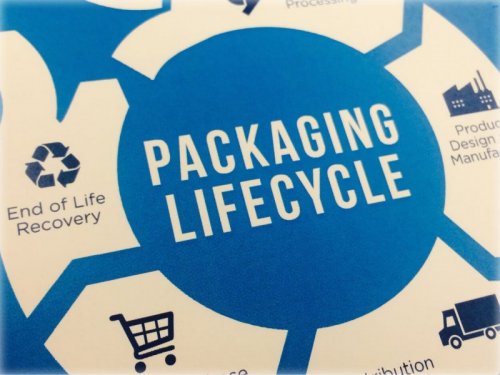Sustainability in Packaging: The Solution is Flexible
August 20, 2019

Sustainability in packaging is at the forefront of many consumer’s minds when it comes to their purchasing habits; however, it is important to note that sustainability and total plastic elimination are not synonymous. Plastics are often vilified in the fight for sustainability because, frankly, they are the easy target. As Kendall Packaging President Eric Erickson III pointed out in the bi-annually newsletter, “There can be a danger in attempting to solve a significantly complicated worldwide issue by latching on to seemingly ‘low hanging fruit,’ rather than fully considering the real cause and effect.” What most consumers don’t realize is that phasing out plastics all together can actually do more harm than good to the environment we’re working so hard to save. There is an apparent lack of information about the “behind-the-scenes” aspects of sustainability, which aren’t always the most obvious but play an important role. Some of the information you may have heard can be misinformed or misleading when it comes to flexible packaging’s role in sustainability, so we’re here to set the record straight.
It’s become apparent that a large portion of consumers agree that corrugated and glass packaging is more sustainable than flexible packaging. Unfortunately, many consumers don’t take into account the sustainable lifecycle of a package from start to finish. Often their focus is on the recycling aspect of the lifecycle and even that information can be misrepresented. In reality, glass and corrugated packaging expend more water, energy, and fuel to make and transport than flexible packaging. Flexible packaging pouches send less waste to landfills with a low packaging-to-product ratio that delivers on quality and efficiency. Rolls of film also take up less space in trucks during transportation, often requiring fewer vehicles and less fuel use. Transporting rigid packaging options require other forms of packaging such as boxes to contain them during the shipping process, which sends more waste to landfills.
About 75% of adults in America consider themselves concerned about sustainability, while only about 20% consistently live their lives in ways that positively affect the environment. Clearly, there is room for improvement. With brands and companies informing their customers of how to dispose of the product in ways that follow the circular economy model, we can close that gap. Currently, the linear economy model is the predominant model used by a majority of companies. In the linear economy, resources are taken, the product is made, and then the product is disposed of, never to be seen again. In the circular economy model, however, the product is made, used, and then recycled in a way that allows for the product to be reinvented, thus reducing the amount of waste that ends up in landfills, oceans, and strewn about the streets. The circular economy model allows flexible packaging manufacturers to utilize post consumer recycled (PCR) either resin in partnership with new materials or manufacture their packaging using PCR materials exclusively.
Unfortunately, often much of this information gets lost in the scramble to find sustainable options. The responsibility falls on brands and suppliers to stand up for plastic packaging and inform consumers of the benefits flexible packaging provides not only for the environment, but also for the quality of their product. Open communication from company to consumer is the answer to reducing waste that ends up in landfills and oceans, minimizing fossil fuel production, and decreasing consumption of energy, fuel, and water responsibly.
Images courtesy of the Flexible Packaging Association. Find the full document and more information regarding flexible packaging’s role in sustainability here.